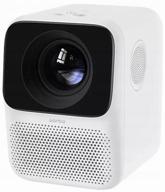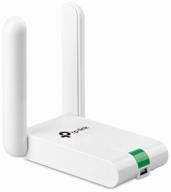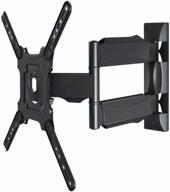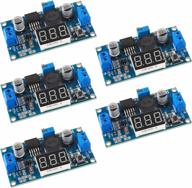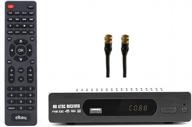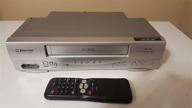Similar products
Old Tech That Still Has Value
Technology evolves at a rapid pace, and gadgets that were once must-have can quickly become obsolete. However, some older tech still retains real value and usefulness despite its age. VCRs are one example of old tech that many people still use and appreciate.
VCRs in the Modern Era
While VCRs are now considered outdated, there are still good reasons to use one in addition to more modern devices:
- Play back old VHS tapes - Watch cherished home videos taken in the 80s, 90s, and early 2000s
- Time shifting TV - Record shows from basic cable to watch later
- Bypass commercials - Fast forward through ads you don't want to see
Of course, one downside is that VCRs only work with analog signals which are increasingly scarce as TV channels switch to HD digital broadcasting. But for the above purposes, a VCR still gets the job done.
Finding and Maintaining VCRs
Tracking down a working VCR can take some searching these days:
- Check thrift stores and garage sales
- Look on Craigslist, eBay, Facebook Marketplace
- Try electronic repair shops
Once you've located a VCR, it's a good idea to perform some routine maintenance:
- Clean the tape path and heads
- Demagnetize the heads
- Inspect belts and moving parts
This will help the VCR run smoothly and last for years to come. Replacement parts are still available if repairs become necessary.
Transferring Home Videos
One of the best uses for a VCR is digitizing old home movies and recordings for preservation. You have two options for transferring VHS tapes to digital:
- Use a VHS-to-DVD recorder to copy tapes onto DVDs
- Connect a VCR to a video capture device to import videos to a computer
Once digitized, you can edit and backup the videos however you like. Services also exist that will convert VHS for you if you mail them your tapes.
VCRs may seem outdated, but still serve useful purposes in the right situations. With proper care and maintenance, they can provide many more years of service playing back analog video content.
VCRs in the Modern Era
Videocassette recorders (VCRs) reached peak popularity in the 1980s and 1990s for playing and recording video content. While VCR technology is now considered outdated, there are still some practical uses for VCRs today.
Reasons to Still Use a VCR
Here are some of the main reasons someone today may still get value from owning a VCR:
- Watching old VHS tapes
- Home movies
- Old commercial tapes
- Vintage films not on DVD
- Recording from analog cable channels
- Time shifting programs
- Skipping commercials
- Converting VHS to digital
- Preserve old videos
- Edit and share online
Finding and Operating VCRs
Locating a working VCR unit gets harder each year as more people upgrade to modern systems. Check online classifieds, thrift stores, garage sales, or specialty electronic shops. Features to test when assessing a VCR include:
- Audio/video input and output
- Remote control
- Fast forward and rewind speed
- Recording functionality
- Image playback quality
Once you have a VCR, it's fairly straightforward to hook up and use. Simply connect it to a TV via coaxial or RCA cables. Insert a tape and press Play, Rewind, Fast Forward, Pause, etc. Refer to the owner's manual for model-specific instructions.
Maintaining VCRs
To keep a VCR working smoothly:
- Clean tape path and heads regularly
- Demagnetize heads as needed
- Check belts and moving parts
- Fast forward/rewind tapes fully before playing
With basic care and upkeep, many retro VCRs can continue operating for years to come.
While not in mainstream use anymore, VCRs still have niche applications today for viewing and transferring analog video content. For those with nostalgic or practical needs, VCRs remain a functional old tech holdover.
Reasons to Still Use a VCR
While VCRs are now considered outdated technology, there are some valid reasons why someone today may still get value from using a VCR.
Watching Old Home Movies
One of the main reasons people hold onto VCRs is for viewing old home recordings on VHS tapes. This can include:
- Home movies from the 80s, 90s, etc.
- Old family event recordings
- Childhood memories
Trying to play these tapes on newer equipment like DVD/Blu-Ray players will not work. So having a working VCR is the only way to watch these old home videos.
Time Shifting Live TV
Another continued use case for VCRs is time shifting live television by recording shows onto tape. This allows you to:
- Record programs to watch later
- Pause or rewind live TV
- Fast forward through commercials
Of course, this only works for analog cable channels still using analog signals. But for basic time shifting without advanced DVR functions, a VCR can still get the job done.
Converting Tapes to Digital
Many people still rely on VCRs for converting old VHS tapes to digital. Options include:
- VHS-to-DVD recorder to save tapes onto DVDs
- Capture device to transfer VHS to files on a computer
This allows home movies and other tapes to be preserved, edited, and backed up digitally. Without a VCR, there is no way to play back the tapes for conversion.
Another interesting products
Vintage Media Viewing
Beyond home recordings, VCRs can also still be useful for viewing purchased vintage media that has not been rereleased on DVD or streaming. This can include:
- Old movies recorded off TV
- Classic films only available on VHS
- Retro commercial compilations
For tape collectors and enthusiasts, a working VCR is essential for accessing this type of retro content.
Backup VCR
Finally, some people keep a VCR around as a backup unit in case their primary media player breaks down. While not an everyday device, it can be handy for playing tapes in a pinch.
So while VCRs are obsolete for most mainstream uses, they still have some niche applications today. For those with specific needs involving analog tape content, VCRs remain a functional older technology.
Finding and Maintaining VCRs
Tracking down working VCRs gets more challenging every year as the technology becomes vintage. But with some searching and basic maintenance, you can still get your hands on a reliable VCR.
Locating VCRs
Here are some tips for finding used VCRs these days:
- Check thrift stores and garage/rummage sales
- Search Craigslist, Facebook Marketplace, eBay
- Look for curbside giveaways
- Try independent electronic repair shops
Prices and availability will vary. Be prepared to do some digging before you locate a suitable VCR. Bring a tape you can test in the unit before purchasing.
Assessing Condition
When evaluating a used VCR, check that:
- The loading mechanism works smoothly
- Play, stop, rewind, fast forward, and pause functions operate
- Image and audio play clearly
- Recording feature works (if needed)
- Inputs/outputs are intact
Cosmetic scratches may be okay, but look for signs of internal issues or excessive wear. Try negotiating the price down for units that need minor repairs.
Performing Maintenance
Once you get a VCR, do some routine maintenance for best performance:
- Clean tape path and video/audio heads
- Check belts and gears
- Demagnetize heads
- Fast forward/rewind tapes before playing
This removes built up debris and calibration issues. Refer to the owner's manual for full maintenance instructions.
Making Repairs
For minor VCR repairs, replacement parts can still be found online. Common fixes include:
- Replacing belts
- Cleaning/lubricating components
- Soldering loose internal connections
- Substituting a different power supply
For more complex issues, seek out an experienced VCR repair tech. However costs may outweigh the value of keeping an older model running.
With some persistence and care, you can get added years of service out of analog VCRs. Keep the old tech alive for accessing vintage home recordings and tapes.
Transferring Home Videos from VCR to Digital
For preserving old home movies and recordings stored on VHS tapes, transferring them to digital formats is highly recommended. Here are some methods to convert your VCR tapes.
Using a VHS-to-DVD Recorder
A straightforward option is to transfer VHS tapes to DVDs using a combo VHS-to-DVD recorder/player device. These machines allow you to:
- Insert a VHS tape
- Play back the video
- Record the content to a blank DVD
This creates archived DVD copies of your tapes to view on modern DVD players. Typical video quality is decent but not HD.
Capturing Video with Analog to Digital Converter
For transferring to digital file formats, you need a video capture device like:
- USB video capture dongle
- Analog to digital converter box
- Computer video capture card (internal PCIe or external Thunderbolt)
Connect your VCR to the capture device's analog inputs, play a tape, and record the video to your computer. This allows saving the files to your hard drive or external storage.
Digitizing Services
Another option is to use a tape conversion service. You ship them your VHS tapes and they handle dubbing them to DVDs, digital files, or both. This saves you time but adds cost.
Make sure to research companies and read reviews to find a reputable service before entrusting your tapes.
Tips for Transferring
Follow these tips when converting VHS to digital:
- Clean VCR heads before transferring for optimal playback.
- Use S-Video or composite connections for best picture quality.
- Check recordings for quality before deleting original tapes.
Converted home video files can then be edited, backed up, and easily shared with family. Just be sure to get them off your old VHS tapes before their playback quality declines further.
What Are The Best Vcrs For Home Use??
Based on the search results, here are some of the best VCRs for home use:
- Panasonic PV-D4744S
- Magnavox DV220MW9
- TOSHIBA DVR620
- Panasonic PV-9450 4-Head Hi-Fi VCR
- Panasonic PV-V4520 4-Head Hi-Fi VCR
- Sony SLV-D380P
It's worth noting that some of these models may be difficult to find or expensive due to their age and rarity. Additionally, some users on Reddit suggest that the Panasonic AG-1980 and JVC SR-V101 are also good options, but these are more professional-grade VCRs and may not be necessary for most home users. Ultimately, the best VCR for home use will depend on individual needs and preferences.
What Are The Differences Between The Top-Rated Vcrs??
Based on the search results, here are some differences between the top-rated VCRs:
Overall, the differences between the top-rated VCRs may come down to individual needs and preferences, such as picture and sound quality, ease of use, and compatibility with different types of tapes.





